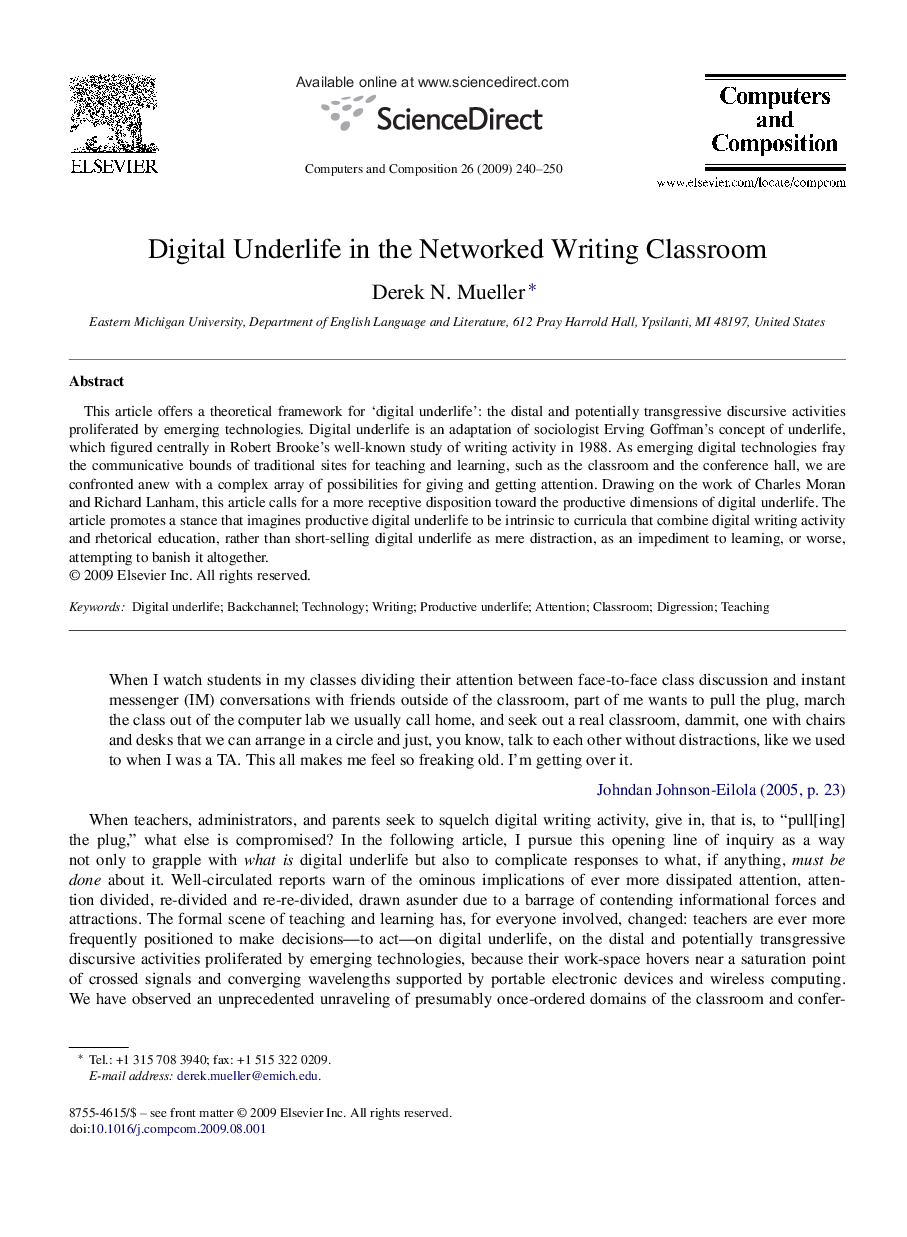| Article ID | Journal | Published Year | Pages | File Type |
|---|---|---|---|---|
| 348033 | Computers and Composition | 2009 | 11 Pages |
This article offers a theoretical framework for ‘digital underlife’: the distal and potentially transgressive discursive activities proliferated by emerging technologies. Digital underlife is an adaptation of sociologist Erving Goffman's concept of underlife, which figured centrally in Robert Brooke's well-known study of writing activity in 1988. As emerging digital technologies fray the communicative bounds of traditional sites for teaching and learning, such as the classroom and the conference hall, we are confronted anew with a complex array of possibilities for giving and getting attention. Drawing on the work of Charles Moran and Richard Lanham, this article calls for a more receptive disposition toward the productive dimensions of digital underlife. The article promotes a stance that imagines productive digital underlife to be intrinsic to curricula that combine digital writing activity and rhetorical education, rather than short-selling digital underlife as mere distraction, as an impediment to learning, or worse, attempting to banish it altogether.
